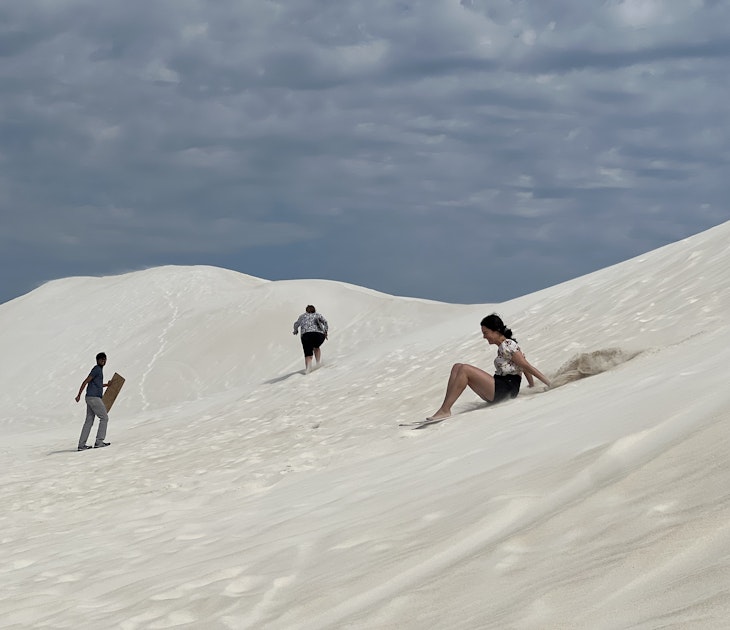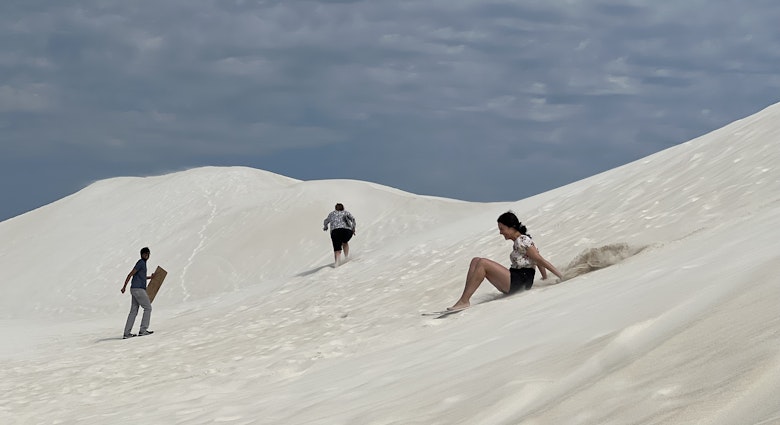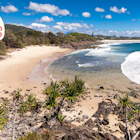Dusting off dinosaur bones in the remote Australian outback may not be everyone’s idea of a holiday, but for amateur palaeontologists, forensically-minded fossil finders and dinosaur lovers the world over, this is the mother lode.
Most of us have had at least a fleeting fascination with dinosaurs. The Jurassic Park films (1993) made more than $2 billion in cinemas and the latest movie instalment, Jurassic World (2015), is set to make box office (pre)history. But where do you go to find real dinosaur bones? If you’re in Australia, it’s outback Queensland.
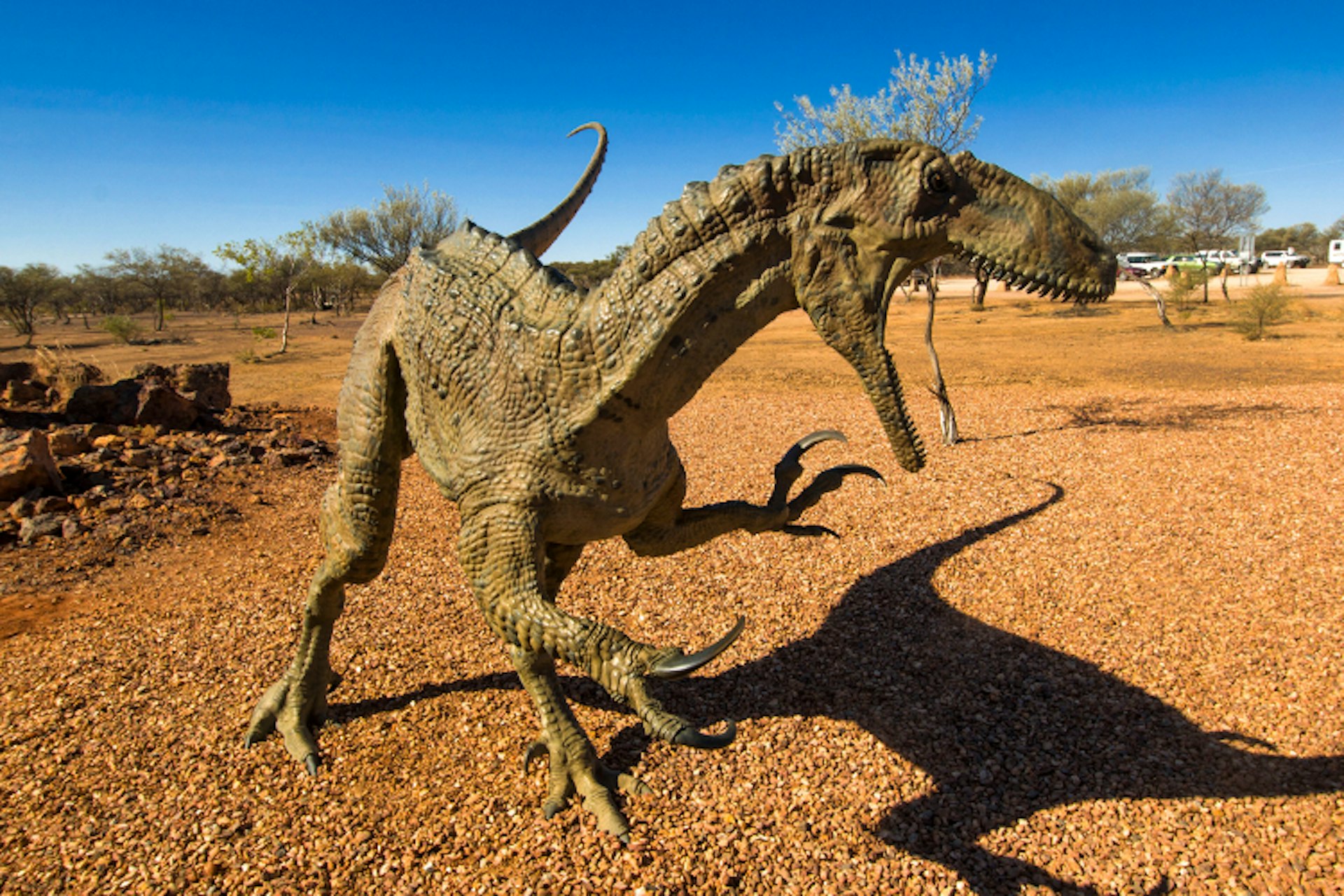
Queensland’s dinosaur triangle
Australia’s fossil record may be relatively small by international standards, but outback Queensland – dry and dusty as it seems today – was once a fertile, humid expanse of tropical rainforest, swamps, and a vast inland sea, teeming with giant prehistoric creatures from pliosaurs to sauropods.
By following outback Queensland’s Dinosaur Trail through a remote and productive area of cattle country, and across semi-desert and abundant fossil fields, you’ll discover what was once Australia’s own little Jurassic – or more accurately, Cretaceous – World.
The highlights of the trail form a slightly askew triangle bounded by the small towns of Winton, Richmond and Hughenden. Distances are big out here – it’s a 560km trip between all three towns (plus detours), and Winton is a cool 1335km road trip from Brisbane, or 600km from Townsville. Once you hit the outback, roads are arrow-straight, the horizon flat and cloudless azure skies seem to go on forever.
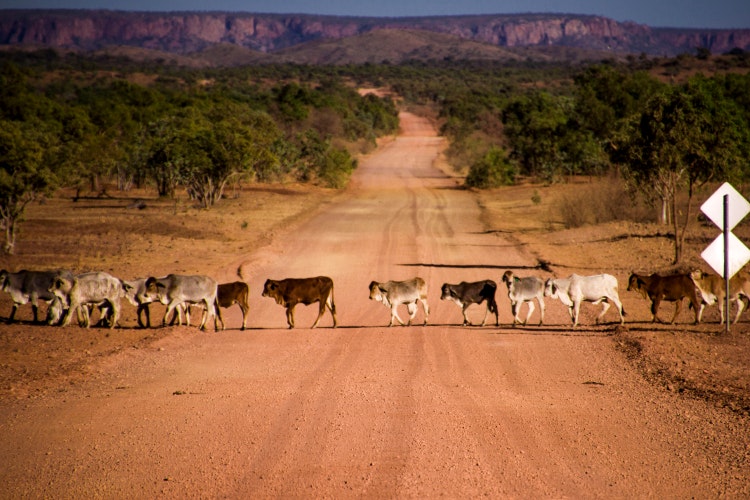
Lark Quarry Conservation Area
Winton is a surprisingly fun little outback town at the heart of dinosaur country, with fond connections to Australian bush poet Banjo Paterson, who first performed his classic poem Waltzing Matilda at the town's North Gregory Hotel in 1895. About 110km southwest of here is the fascinating Lark Quarry Conservation Area (dinosaurtrackways.com.au).
Archaeological evidence suggests that, about 95 million years ago, a herd of small bipedal dinosaurs known as coelurosaurs and ornithopods, were drinking by a lake at this once fertile spot. Stalking them was a much larger carnivorous – and probably ravenous – therapod. The resulting stampede left thousands of scattered footprints in the streambed, which nature remarkably conspired to fossilise beneath millions of years of sediment. At least, that’s the leading scientific theory, and it was Steven Spielberg’s inspiration for the stampede of dinosaurs in the original Jurassic Park.
Today the Lark Quarry Dinosaur Trackways are protected by a sheltered walkway and the site can only be visited on an exceptionally thought-provoking guided tour.

Australian Age of Dinosaurs
While the footprints of a stampede were a rare find, local farmers around Winton have been tripping over fossils for years. About 15km from Winton on a local cattle station, atop a rugged plateau known as the 'Jump Up', lies Australian Age of Dinosaurs (australianageofdinosaurs.com). This fossil research facility and museum seeks to piece together the dinosaur puzzle and organises annual professional 'dinosaur digs' to find, prepare, classify and ultimately assemble these ancient bones.
At the laboratory – the largest working fossil lab in the southern hemisphere – you can see technicians preparing fossils, or you can sign up for a day of preparation training (A$65) yourself. Stay a week (A$560) and you can become an honorary fossil technician. Booking ahead is advised.
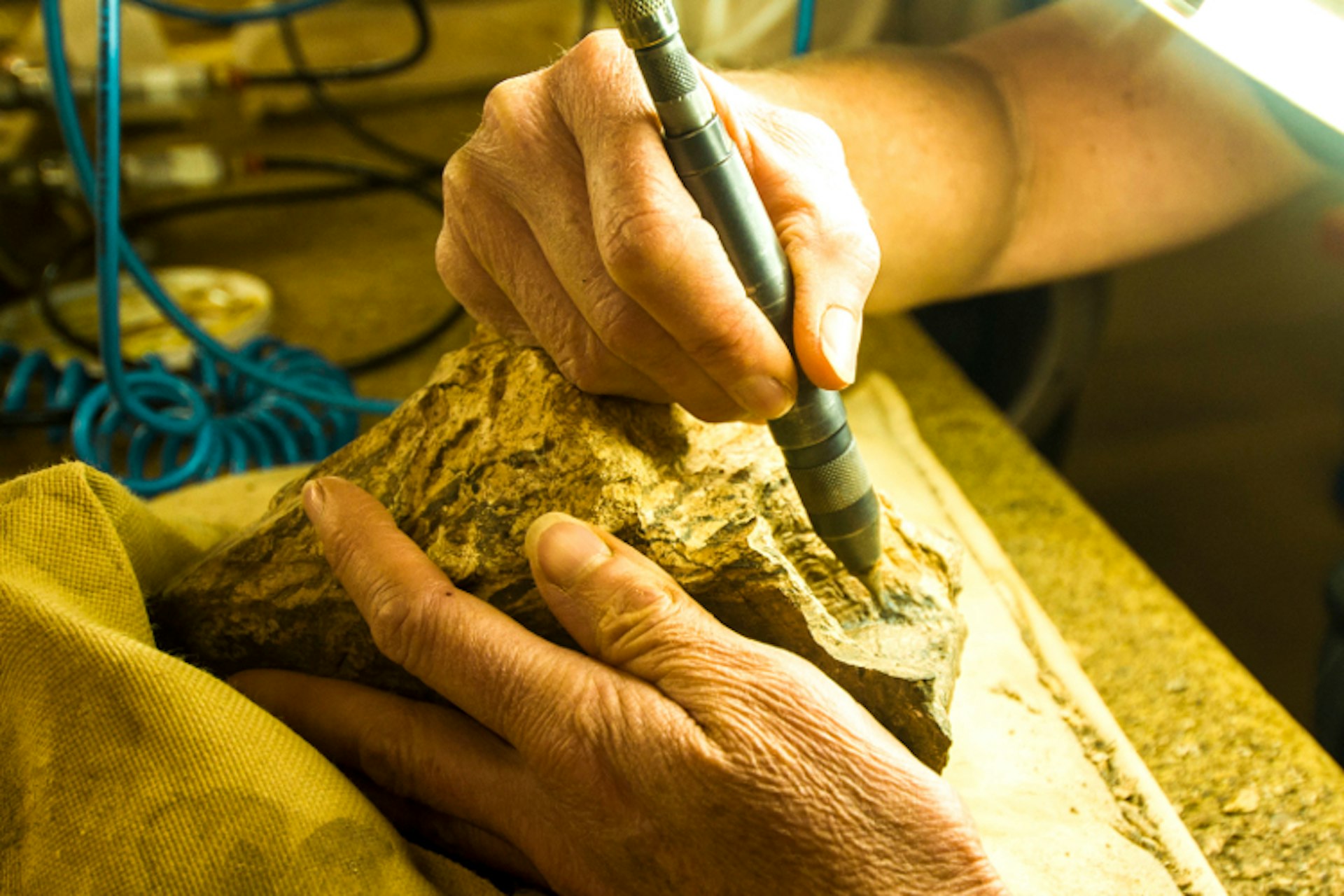
The rest of the museum houses a collection comprising original dinosaur fossils found in the region that make up the incomplete skeletons of 'Matilda' (Diamantinasaurus matildae), a large plant-eating sauropod, and 'Banjo' (Australovenator wintonensis), the most complete skeleton of a carnivorous theropod ever found in Australia. A high-tech gallery with visual animations helps bring the dinosaurs to life.
In May and June each year, hotly anticipated 'Dig-a-Dino' weeks are organised around the fossil-rich Winton Formation. They’re not cheap at A$3500 per week, but they’re so popular you’re advised to book up to a year in advance. Digs include accommodation and meals, creating a community feel among participants. You’ll join palaeontologists and museum staff out in the fossil fields, learning what to look for and what to do when you find it. Brachiosaurus and titanosaurus bones have been discovered here in past digs.
Kronosaurus Korner
North of Winton, tiny Richmond was once underwater, on the fringes of a vast inland sea, and is now home to the biggest and best collection of marine fossils in Australia. The fossils and skeletons are on display in town at the exceptional little museum Kronosaurus Korner (kronosauruskorner.com.au). The star attractions are an almost complete 4.25-metre-long pliosaur skeleton – one of Australia’s best vertebrate fossils; a partial skeleton of Kronosaurus queenslandicus, the largest known marine reptile ever to have lived here; and the Minmi, an almost complete skeleton of a small, armoured ankylosaur.
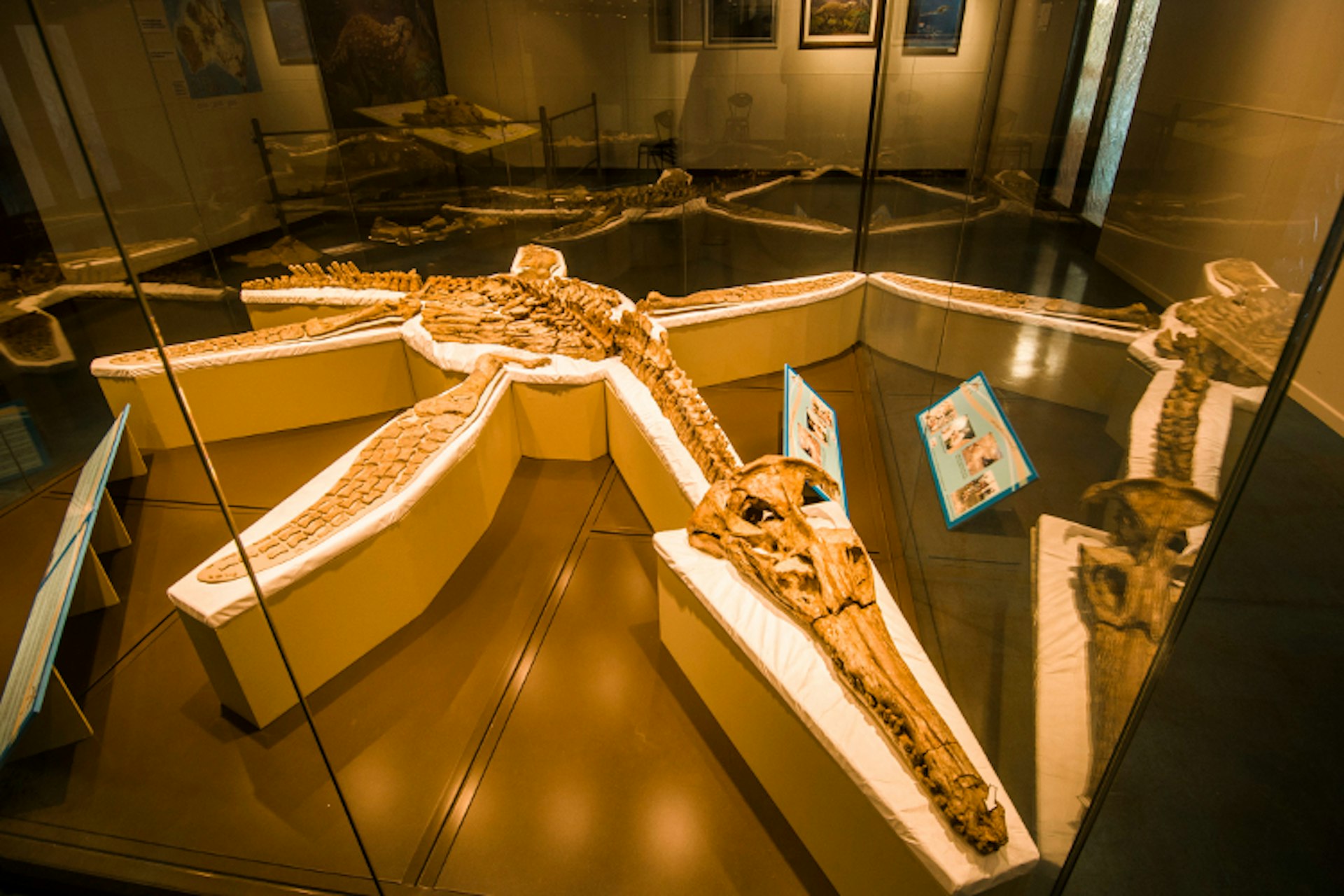
New bones are being unearthed in the region frequently, and there are two easily accessible quarry sites about 12km north of Richmond where you can do your own fossil hunting for free. In 2014, a seven-year-old girl discovered the 100-million-year-old bones of an ichthyosaur, a long-extinct and rather impressive marine reptile. Maps and tools are available from Kronosaurus Korner and they also run two-hour guided digs from May to September.
Flinders Discovery Centre
Hughenden, while not as productive for fossil hunters, is worth a look for its Flinders Discovery Centre, which houses a replica skeleton of Muttaburrasaurus, an impressive 8-metre-long dinosaur found south of here in Muttaburra in the 1960s.

Make it happen
The Dinosaur Trail is best explored with your own vehicle but you can also fly in to Longreach (180km from Winton) and take a bus or hire car from there. Tours are available from Winton to the main sites. Buses also run between Townsville and Mount Isa, via Richmond and Hughenden. All main roads are sealed. It’s best to visit between April and September to avoid the harsh summer months.

